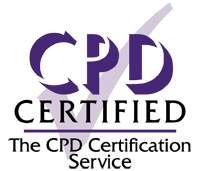You searched for "ectropion"
Origami and ophthalmology: precision unfolded
2 February 2024
| Hosam Aglan
|
EYE - General
For Eye News Feb/Mar 2024, I was delighted to hear from Dr Hosam Aglan. In New Zealand at the time, Dr Aglan shared wonderful insights into the art of folding origami, along with images from his own creations. The role...
Early refractive correction promotes esotropia control
7 April 2021
| Fiona Rowe (Prof)
|
Paediatric Ophthalmology / Strabismus
This study sought to determine the incidence and characteristics of esotropia in a Northern Ireland population of children <7 years old in a one-year period. The authors report a 2013 cohort in which the area catchment had 29,365 children under...
Divergence insufficiency esotropia is increasingly more common and new theory of aetiology
2 August 2022
| Lauren R Hepworth
|
Paediatric Ophthalmology / Strabismus
The authors present a retrospective case review of acquired esotropia. An internal database was reviewed for cases of esotropia and divergence insufficiency between 1978 and 2018 and seen by a single ophthalmologist. Patients with initial presentation of esotropia onset after...
Changes in refractive error in patients with accommodative esotropia after being weaned from hyperopic correction
This is a retrospective review of medical records of 47 patients with refractive ocular accommodative esotropia who achieved emmetropisation and orthotropia without hyperopic glasses correction and were followed up for at least three years. The objective of the study is...Sex hormones in males and females with central serous chorioretinopathy
5 June 2023
| Sofia Rokerya
|
EYE - Vitreo-Retinal
This study was aimed to assess the role of sex hormones in male and female patients with central serous chorioretinopathy (CSC), a disease with a pronounced male predilection. Two hundred and six patients, 183 males (mean age 52, median 52,...
Iranian prevalence of strabismus
4 August 2021
| Fiona Rowe (Prof)
|
Paediatric Ophthalmology / Strabismus
|
Cross-sectional study, Iran, Phoria, Strabismus, Tropia
There is little prior evidence on prevalence of strabismus in Iran. Thus, this study was undertaken to investigate the prevalence of strabismus types in Azad University students aged 18-25 years in South West Iran. A total of 752 of 826...
MISS vs. conventional surgery
1 October 2018
| Fiona Rowe (Prof)
|
Paediatric Ophthalmology / Strabismus
This was a prospective randomised parallel arm design study for 40 patients. Group 1 consisted of conventional strabismus surgery using the limbal approach and group 2 consisted of minimally invasive strabismus surgery (MISS). Mean age was 21.1±2.73 years for MISS...
Refractive changes after surgery
1 August 2016
| Fiona Rowe (Prof)
|
Paediatric Ophthalmology / Strabismus
|
Astigmatism, horizontal muscle surgery;, horizontal strabismus surgery, refraction, surgical induced refractive error
A long-term follow-up study was conducted to report power vector analysis of refractive astigmatic changes in a large group of 137 patients (250 eyes) undergoing horizontal strabismus surgery. Fifty-four percent were male. The average age was 9.22±8.21 years. Fifty-five percent...
Iranian strabismus prevalence
1 June 2016
| Fiona Rowe (Prof)
|
Paediatric Ophthalmology / Strabismus
|
Epidemiology, Middle-east, Strabismus
This study aimed to evaluate the prevalence of heterotropia and heterophoria in Iran. This was a cross-section study undertaken in 2013 with the target population of grade 1 (seven-year-old) children. Seven cities across different geographical locations were included with multistage...
Reduced angle after BT for postop diplopia test
1 August 2014
| Fiona Rowe (Prof)
|
Paediatric Ophthalmology / Strabismus
The authors undertook a retrospective study to evaluate the extent of reduced deviation after Botulinum toxin (BT) when used as a postoperative diplopia test. They evaluated effect in 39 patients: 32 exotropia and seven esotropia. The same BT dose was...













